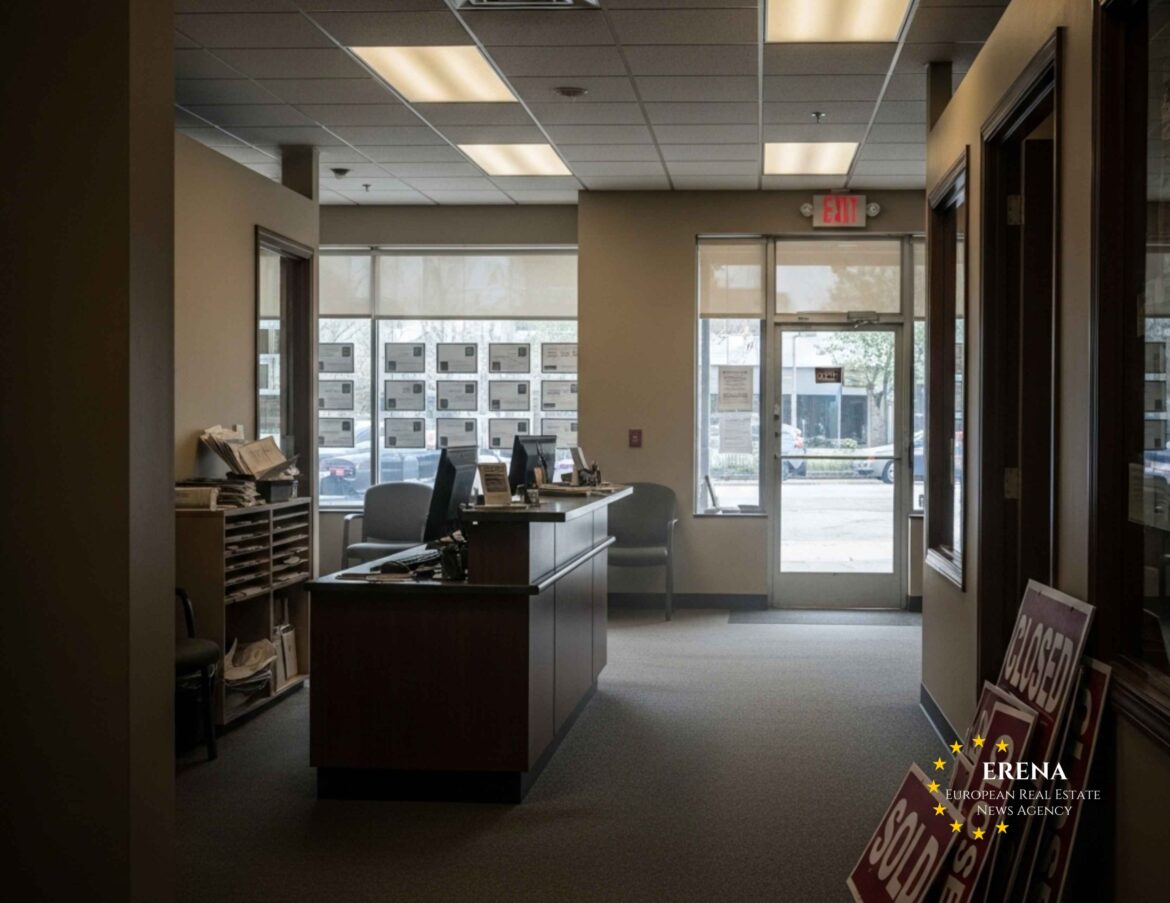The U.S. real estate market is experiencing a significant downturn in activity, sparking growing concern among economists and industry professionals about the possibility of a looming recession. Recent data shows a sharp drop in both residential and commercial property transactions, with overall deal volume falling to its lowest levels in over a decade. This slump comes amid persistent inflation, high interest rates, and declining investor confidence in the short-term resilience of the property sector.
Historical Context
The U.S. real estate market has long been viewed as a bellwether for the nation’s economic health. A robust housing market often signals consumer confidence, stable financing conditions, and favorable macroeconomic indicators. However, 2025 has shown a reversal of this trend: transaction volumes have dropped by more than 25% year-over-year.
The commercial sector has taken the hardest hit. According to Real Capital Analytics, overall transaction volume in office, retail, and industrial properties fell by 38% in Q1 2025 compared to the same quarter in 2024. The residential multifamily sector also saw a notable decline of around 22%.
Causes of the Decline
The primary driver of the slowdown is the Federal Reserve’s continued high benchmark interest rate, which remains in the 5.25%–5.5% range. Mortgage rates have surged as a result: the average 30-year fixed-rate mortgage reached 7.1% in May 2025, compared to around 3.5% just two years prior. This has significantly reduced affordability for homebuyers and cooled demand across all tiers of the housing market.
Another factor is the drop in foreign investment. A strong U.S. dollar and the appeal of high-yield bonds have prompted many international funds to shift their focus away from real estate and into more liquid assets. Additionally, high material costs, labor shortages, and ongoing supply chain disruptions have delayed or halted many development projects.
Market uncertainty and stricter lending criteria have also made both buyers and developers more cautious, contributing to the ongoing slowdown.
Market Response
Industry stakeholders have begun to adjust their strategies. Developers are postponing or canceling projects, particularly in office and retail real estate, where future demand remains uncertain. Meanwhile, investors are gravitating toward relatively stable asset classes like logistics hubs and multifamily housing, which are seen as more resilient.
Large firms such as Blackstone and Brookfield are shifting their focus from launching new funds to managing and consolidating existing portfolios. Institutional investors are increasingly searching for distressed assets at a discount, but such opportunities remain scarce as many property owners prefer to wait out the downturn rather than sell at reduced prices.
Expert Outlook
Analysts at CBRE predict that, if the Fed maintains its current interest rate policy, a recovery in the real estate sector may not begin until mid-2026. The office segment faces particular challenges due to structural changes in workplace habits, with hybrid and remote models reducing long-term demand for traditional office spaces.
In the residential sector, a mild rebound could emerge later this year if inflation continues to ease and mortgage rates stabilize. However, the return to pre-pandemic transaction volumes appears unlikely in the near term. Consumer sentiment remains cautious, and lenders are applying stricter criteria for mortgage approvals.
Recession Indicators
While a slowdown in property transactions alone does not confirm a recession, the broader economic picture suggests rising risks. Consumer spending has weakened, business confidence is slipping, and GDP growth is expected to fall below 1.5% in 2025, according to forecasts by Goldman Sachs.
The labor market is also showing signs of stress. Unemployment has risen to 4.3%, and new jobless claims have reached their highest level since 2021. These signals, combined with a slump in construction and real estate-related services, are contributing to growing fears of an economic downturn.
Regional Differences
The decline is not uniform across the United States. States like Texas and Florida have shown relative resilience, supported by continued population growth and favorable tax environments. Conversely, major urban centers such as New York City, San Francisco, and Chicago have reported record declines in commercial leasing activity and property sales.
San Francisco, in particular, continues to grapple with an exodus of tech firms and a glut of unused office space. In New York, landlords are being forced to renegotiate leases and offer substantial incentives to attract or retain tenants.
Potential Support Measures
In light of these developments, some analysts are calling on the Federal Reserve to begin gradually reducing interest rates in the second half of 2025. However, the Fed has yet to signal a shift in policy, maintaining that inflation control remains its top priority.
Meanwhile, some local and state governments have introduced stimulus programs, including tax credits for homebuyers, subsidies for developers, and accelerated permitting processes. While these initiatives offer some relief, they are unlikely to reverse national trends without broader federal intervention.
Conclusion
The sharp drop in U.S. property transactions in 2025 is more than a cyclical downturn — it reflects deep structural challenges facing the real estate sector. High interest rates, changing consumer behavior, tighter credit access, and global uncertainty have combined to erode confidence in the market.
Although a full-blown recession is not yet confirmed, the convergence of these trends suggests the need for strategic reassessment by investors, developers, and policymakers alike. Restoring momentum in the real estate market will require more than just rate cuts — it will demand adaptation to new realities of demand, technological shifts, and evolving buyer expectations.
In the coming months, the U.S. property market will continue to serve as a key indicator of the nation’s economic trajectory — a crucial barometer of both current sentiment and future stability.

